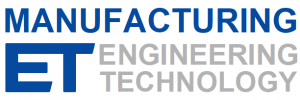What is 3D Printing?
Background
- Ways of manufacturing things:
- Material removal
- Forming
- Casting
- Additive
- Hard Facing
- Plating (electrotyping)
- Metal Spraying
- Coil Pottery
- Tool-less fabrication of plastics
- Cost of Change Diagram
- Traditional plastics processes
- Injection molding
- Expense of tooling
- At first, used as prototypes
- Meaning of prototype
- Uses for a prototype
- Aesthetic appeal
- Fit
- Function
- Manufacturing feasibility
- Other ways of making prototypes
The Technologies
- Stereolithography
- Photo curing polymer
- Explanation
- [SLA] Charles Hull – 1984 – Apparatus for production of three-dimensional objects by stereolithography US 4575330 A
- Founded 3d Systems
- 1987 SLA-1 (first commercial system)
- Expansion into other methods
- [SLS] Carl Deckard – 1989 – Method for selective laser sintering with layerwise cross-Scanning
- US 5155324 A
- (DTM, Inc. – sold to 3D systems)
- [FDM] Scott Crump – 1989 (STRATASYS) Fused Deposition modeling
- [DMLS] Hans Langer EOS GmbH
- Direct Metal Laser Sintering
- [BPM] Ballistic Particle Manufacturing
- Objet
- [DBM] Droplet-Based Manufacturing (includes Z corp)
- Droplets as binders (Z Corp)
- Began to be called 3D Printing (MIT Trademark)
- [LOM] laminated Object Manufacturing
- Emerging technologies – Printing Circuits, bioprinting, etc.
- Breakoff of FDM to hobby sector (2004 Dr. Bowyer & Reprap)
Uses of 3d Printed Objects
Prototypes & Mockups of plastic and other components
1) Advantage: Can make parts that can’t be made
- Inj. Molding Restraints
- Mold parting
- Wall thickness
- Mold Required
2) Disadvantage: Can make parts that can’t be made
- Does not show how difficult to mold
- Does not reflect mechanical props of molded
- But…Some models can be used as rapid tooling
Rapid Tooling
- Casting tooling
- Patterns & Molds
- Injection mold tooling
As an Additive Manufacturing Process
- Slow
- Resolution low (by comparison)
- Often requires post processing
- Many advantages
- Custom designs
- Freeform interior cavities
How the process works
- CAD Model – many formats (STEP, IGES, DXF, DWG, PRT…)
- OR Scanned Geometry
- STL File (Surface Mesh)
- Tessellation
- Slicing – contour generation &
- G-Code Generation
- CNC Equipment
- (sometimes Host Software)
- About CNC Machining
- Differentiate b/t 3D Printing
- Firmware on Controller
- Motor Drivers
Actual Workflow
- 3D CAD programs
- Autodesk
- Inventor
- Autodesk 360
- PTC Creo (formerly pro Engineer)
- DSS SolidWorks
- DSS Catia
- Siemens NX (Unigraphics)
- Siemens Solid Edge
- Blender
- Sketchup
- Tinkercad
- Cubify
Basics of 3D CAD
3D Space
Need Volume to be defined
Points, lines, arcs, planes cannot be printed
CSG Vs. BRep
Boolean Venn Diagrams
Boundaries
Exist on a plane
Closed
Swept Shapes
Extrusion
Revolving
Sweeping along guide
Apply Booleans,
Intersection
Union
Subtraction
Exporting
Resolution!
Basics of Slicing STL
FDM Printer Process Variables
Extrusion Speed
Extruder head speed
Temperature of Base
Temperature of Extruder Head
Support options
Raft options
Wall thickness options
Model Placement
Orientation is important
Parts are anisotropic
Material Variables
Melting point
Creep resistance
Toughness
Strength
Post Print Processing
Raft & Support Removal
Smoothing
Painting & Coating
Other processes require different post-print processes
Health issues
Legal& Ethical issues, copyright, trademark law, gun printing, etc.
See: Print the Legend
